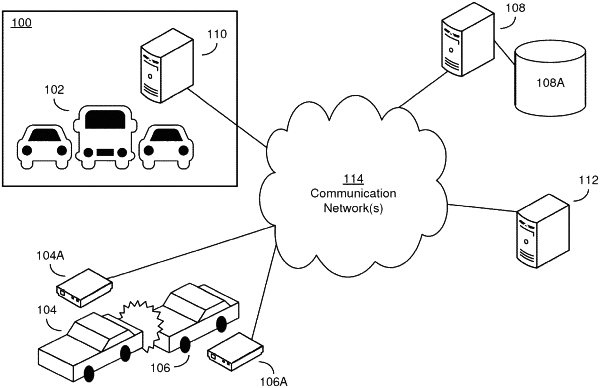| CPC G08G 1/162 (2013.01) [B60W 30/09 (2013.01); B60W 30/0953 (2013.01); G08G 1/166 (2013.01); B60W 2520/00 (2013.01); B60W 2556/50 (2020.02); B60W 2756/00 (2020.02)] | 19 Claims |

|
1. A method, comprising:
capturing, by a telematics monitor coupled to a vehicle, high-rate acceleration data, speed data, and global positioning system (GPS) data;
identifying at least one high-rate acceleration trigger event from the high-rate acceleration data;
computing a plurality of feature values for a plurality of features corresponding to the at least one high-rate acceleration trigger event;
when at least some of the plurality of feature values indicate that the at least one high-rate acceleration trigger event comprises a noise event or a harsh braking event, filtering out the at least one high-rate acceleration trigger event from the high-rate acceleration data;
when the at least some of the plurality of feature values indicate that the at least one high-rate acceleration trigger event does not comprise a noise event and does not comprise a harsh braking event;
computing a plurality of feature scores corresponding to the plurality of feature values;
computing an acceleration context based on the plurality of feature scores;
computing, by a collision detection facility local to the telematics monitor, each of:
the acceleration context based on the high-rate acceleration data;
a pullover context based on the speed data;
a speed context based on the speed data; and
a road context based on the GPS data;
computing, by the collision detection facility, an accident score based on the acceleration context, the pullover context, the speed context, and the road context; and
in response to determining that the accident score indicates a potential collision, triggering at least one action for responding to the potential collision.
|